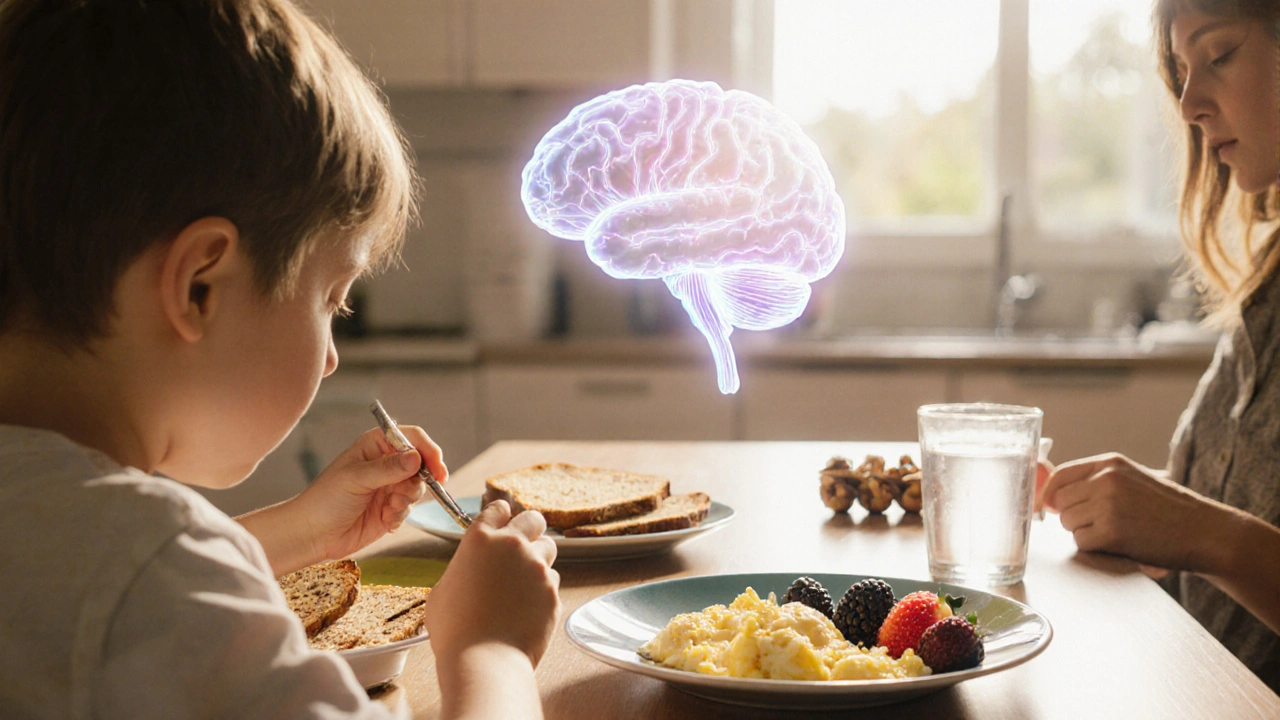ADHD Nutrition: Food Strategies to Calm the Brain
When working with ADHD nutrition, the dietary approaches that aim to reduce ADHD symptoms through balanced intake of protein, omega‑3 fatty acids, vitamins, and low‑glycemic carbs. Also known as ADHD diet, it focuses on nutrients that support brain function and steady energy levels, you’ll quickly see that it Omega‑3 fatty acidsare essential fats that help sharpen attention and mood and that Proteinstabilizes blood sugar and fuels neurotransmitter production plays a key role. Pair that with a Low‑sugar dietthat avoids sudden energy spikes that can trigger hyperactivity, and you have a solid foundation for managing ADHD without relying solely on medication.
Why does diet matter for ADHD? Research shows that blood‑sugar swings and nutrient gaps can amplify inattention, impulsivity, and restless behavior. When the brain receives a steady supply of the right building blocks, neural pathways fire more efficiently. That’s why many parents and adults notice calmer focus after swapping sugary snacks for balanced meals.
Omega‑3 fatty acids are often the first supplement mentioned in ADHD nutrition conversations. EPA and DHA, the two main omega‑3s, are found in fatty fish like salmon, sardines, and mackerel, as well as in fortified eggs and algae‑based capsules. Studies suggest that a daily dose of about 1,000 mg can modestly improve attention and reduce hyperactive symptoms. If fish isn’t on the menu, an algae supplement offers a plant‑based alternative without the fishy aftertaste.
Next up is protein. Foods such as lean meats, beans, Greek yogurt, and nuts release amino acids that become neurotransmitters like dopamine and norepinephrine—chemicals directly linked to focus and impulse control. Starting the day with a protein‑rich breakfast (think eggs or cottage cheese) can prevent mid‑morning sugar crashes that often trigger restlessness.
A low‑sugar diet doesn’t mean you have to give up all sweets, but it does mean choosing complex carbs over simple ones. Whole grains, fruits with fiber, and legumes digest more slowly, keeping blood glucose steady. In contrast, candy, soda, and white‑bread cause rapid spikes followed by crashes, which can worsen hyperactivity and distractibility.
Beyond the big three, several micronutrients play supporting roles. Iron deficiency has been linked to poorer cognitive performance, so incorporating lean red meat, spinach, or lentils can be helpful. Zinc, found in pumpkin seeds and oysters, supports brain signaling, while magnesium—abundant in leafy greens, avocado, and dark chocolate—helps calm the nervous system. Ensuring these vitamins and minerals are part of daily meals rounds out a comprehensive ADHD nutrition plan.
When you consider supplements, quality matters. Look for third‑party tested brands that list exact EPA/DHA amounts, avoid added sugars, and provide clear dosage instructions. Because many ADHD patients also take prescription meds, it’s smart to check for potential interactions—some supplements can affect how drugs are absorbed. Our collection includes guides on safely buying generic medications online, so you can verify that any supplement you add won’t clash with your prescription.
Speaking of medication, the link between diet and drug effectiveness is often overlooked. For example, taking stimulant meds with a high‑protein, low‑sugar meal can smooth out the medication’s onset and reduce jitteriness. Conversely, a sugary breakfast may cause a faster peak and a quicker crash. Understanding these dynamics helps you get the most out of both nutrition and pharma strategies.
Practical meal planning doesn’t have to be a chore. Start by prepping protein‑rich snacks—hard‑boiled eggs, cheese sticks, or hummus with veg sticks—to keep on hand during school or work. Rotate omega‑3 sources weekly: grilled salmon on Monday, sardine salad on Thursday, and a algae capsule on Friday. Keep a fruit bowl with berries and a handful of nuts as a balanced, low‑sugar option for mid‑day cravings.
Common pitfalls include over‑relying on “quick‑fix” diets, skipping meals, or using too many processed supplements. Skipping breakfast can lead to low blood sugar, making a child more irritable. Relying on candy as a reward reinforces the sugar‑hyperactivity cycle. Instead, celebrate milestones with non‑food rewards like extra playtime or a new book.
Monitoring progress is essential. Keep a simple log of meals, supplement doses, and behavioral observations. Note any changes in focus, mood, or sleep patterns after dietary adjustments. Over a few weeks, patterns will emerge, letting you fine‑tune the plan. If you’re uncertain about changes, consult a dietitian familiar with ADHD or a healthcare provider who can guide safe medication and supplement choices.
Below you’ll find a range of articles that dive deeper into safe medication purchases, drug‑interaction guides, and supplement safety tips. Together, they give you a full toolkit for handling ADHD—from what you eat to how you manage prescriptions—so you can build a balanced, sustainable approach that works for you or your child.
How Diet and Nutrition Affect ADHD Symptoms: Practical Guide
- DARREN LLOYD
- 12
Discover how specific foods, nutrients, and eating patterns can ease ADHD symptoms and boost focus with practical, evidence‑based tips.
READ MORE
